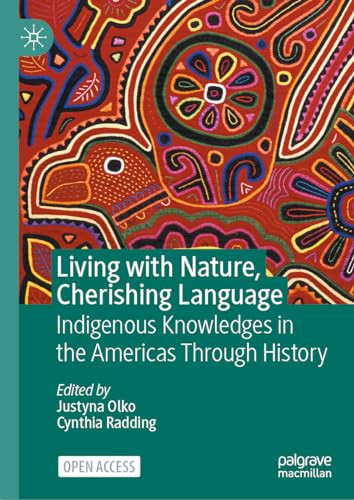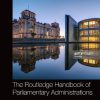Living with Nature Cherishing Language Indigenous Knowledges in the Americas Through History 1st Edition by Justyna Olko, Cynthia Radding ISBN 3031387384 978-3031387388
$50.00 Original price was: $50.00.$25.00Current price is: $25.00.
Living with Nature Cherishing Language Indigenous Knowledges in the Americas Through History 1st Edition by Justyna Olko, Cynthia Radding – Ebook PDF Instant Download/Delivery: 3031387384, 978-3031387388
Full dowload Living with Nature Cherishing Language Indigenous Knowledges in the Americas Through History 1st Edition after payment

Product details:
ISBN 10: 3031387384
ISBN 13: 978-3031387388
Author: Justyna Olko, Cynthia Radding
This open access book explores the deep connections between environment, language, and cultural integrity, with a focus on Indigenous peoples from early modern times to the present. It illustrates the close integration of nature and culture through historical processes of environmental change in North, Central, and South America and the nurturing of local knowledge through ancestral languages and oral traditions. This volume fills a unique space by bringing together the issues of environment, language and cultural integrity in Latin American historical and cultural spheres. It explores the reciprocal and necessary relations between language/culture and environment; how they can lead to sustainable practices; how environmental knowledge and sustainable practices toward the environment are reflected in local languages, local sources and local socio-cultural practices. The book combines interdisciplinary methods and initiates a dialogue among scientifically trained scholars and local communities to compare their perspectives on well-being in remote and recent historical periods and it will be of interest to students and scholars in fields including sociolinguistics, (ethno)history, linguistic anthropology, cultural studies and cultural anthropology, environmental studies and Indigenous/minority studies.
Living with Nature Cherishing Language Indigenous Knowledges in the Americas Through History 1st Table of contents:
1 Living with Nature Across Time, Space and Cultural Perspectives: Introduction
Part I Environment and the Knowledge of the Ancients
2 Flexible Borders, Permeable Territories and the Role of Water Management in Territorial Dynamics in Pre-Hispanic and Early Hispanic Peru
Introduction
The Culebras Valley and Its Environmental Setting, Past, and Present
Territorial Dynamics in a Local Context: The Case of the Culebras Valley
The Early Intermediate Period (100–700 AD)
The Middle Horizon (700–1050 AD)
The Late Pre-Hispanic Periods (1050–1532 AD)
Conquest and Aftermath
Conclusions
Bibliography
3 Ihuan Yehhuan Tlacuauh Tlamauhtiah in Ichcapixqueh. “And the Shepherds Are Inspiring Great Fear”. Environment, Control of Resources and Collective Agency in Colonial and Modern Tlaxcala
Introduction
Protecting the Territory
Collective Threats and Losses
Other Early Responses
Communities’ Stories of Resilience: Legal Battles in the Latter Part of the Colonial Period
Traditional Knowledge, Healing, Language and Well-Being
Summary and Conclusions
References
4 Ñudzahui Custom, Contracts, and Common Lands in Eighteenth-Century Oaxaca
Ñudzahui Territory, Land Tenure, and a 1690-Partnership Contract
Partnership and Plural Ownership in the Eighteenth-Century Composiciones de Tierras
Partnership, Plural Ownership, and Cacicazgos
Conclusion
Bibliography
5 The Yoreme Creation of Itom Ania in Northwestern Mexico: Histories of Cultural Landscapes
The Spatial and Cultural Creation of Itom Ania
Colonial Borderlands in Petatlán
Defending the Monte
Language and Histories of Cultural Landscapes
References
6 Gender Disparities in Guaraní Knowledge, Literacy, and Fashion in the Ecological Borderlands of Colonial and Early Nineteenth-Century Paraguay
Colonial Legacies for Literacy in the Early Republic of Paraguay
Fashion and Social Standing Among the Guaraní
Public Education in the Republic of Paraguay
Conclusions: Knowledge, Education, and Gender
Bibliography
Part II Language, Environment, and Well-Being: Contemporary Challenges
7 The Generational Gap and the Road to Well-Being: Language and Natural Environment in the Discourses of Indigenous Old and Young in Tlaxcala
Introduction
San Bernardino Contla Then and Now: Overviewing the Environmental and Sociolinguistic Change
Attitudes of the Elderly and Young People Towards Language and Mutual Communication
Attitudes of the Elderly and Young People Towards Natural Environment and Its Change
Discussion: Combining the Opposites
Conclusions
List of Interviews
8 “¡Amo kitlapanas tetl!”: Heritage Language and the Defense Against Fracking in the Huasteca Potosina, Mexico
Introduction
Huasteca Potosina—Geography, History, Demographic, and Linguistic Situation
Language Domains in the Huasteca Potosina
Indigenous Economies and Resources
Fracking in Mexico
Controversies Regarding Fracking
Resistance Against Fracking in the Huasteca Potosina
Use of Indigenous Languages in the Anti-Fracking Movement
Discussion
Concluding Remarks
References
9 The Interrelation Between Language, History, and Traditional Ecological Knowledge Within the Nahuat-Pipil Context of El Salvador
Introduction
Brief Historical Context
Linguistic
Migration
Language and Biodiversity
Biological and Linguistic Diversity
Major Political and Social Events
The Encoding of TEK in Nahuat-Pipil
Categorization and Classification
Basic Principles of Classification
Categorization and Classification Examples
Folk Nomenclature
Naming Conventions and Examples
Morphosyntactic Structure
N
Nn
NAdj
Non-Agglutinative Noun Phrases
Conclusion
Bibliography
10 Cenotes and Placemaking in the Maya World: Biocultural Landscapes as Archival Spaces
Yo, cenote
Introduction
I, Cenote
Bibliography
11 Nakua nukuu ini Ñuu Savi: Nakua jíno, nakua ka’on de nakua sa’on ja jee Koo Yoso
Kijeo
Koo Yoso Ñuu Savi
Tumi xiñu
Viko Kasiki ji Koo Yoso
Ityi jee
In, uu tu´un de ko´on
Memory and Cultural Continuity of the Ñuu Savi People: Ancestral Knowledge, Language and Rituals Around Koo Yoso Deity
Abstract
Introduction
The Mixtec Quetzalcoatl
Precious Feathers
Viko Kasiki and Koo Yoso
New Values Around Koo Yoso and Viko Kasiki
Conclusions
Bibliography
12 Tlaneltoquilli tlen mochihua ica cintli ipan tlalli Chicontepec: tlamantli chicahualiztli ipan tochinanco
Cintli Itlaneltoquil: Ce Tlamatli Chicahualiztli
Cintli quemman eli xinachtli, miyahuatl huan Chicomexochitl
Xinachtli
Miltlatlacualtiah
Elotlamanah
Quemman miyahuacalaquiah
Cintlacualtiah
Quemman tlatlacualtiah
Cintli itlaneltoquil huan cualli nemiliztli
Ixcopintlaltecpanalli
Ceremonial Practices Relating to Corn in the Region of Chicontepec: Local Aspects of Wellbeing
The Maize Ceremonies: An Act of Faith
Maize as Xinachtli, Miyahuatl, and Chicomexochitl
Xinachtli: Offering to the Corn Seed
Miltlacualtiah: Offering to the Milpa
Elotlamanah: Blessing of the Corn and Feast
Miyahuacalaquiah: Offering to the Tasseled Plant
Cintlacualtiah: Offering to Maize Grain
Tlatlacualtiah: Rain Petition
Maize Ceremonies and Cualli Nemiliztli
People also search for Living with Nature Cherishing Language Indigenous Knowledges in the Americas Through History 1st :
examples of indigenous communities
why indigenous languages matter
why is it important to keep indigenous languages alive
what problems do indigenous communities face
You may also like…
Politics & Philosophy - Anthropology
Origin A Genetic History of the Americas 1st Edition by Raff 9781538749708 153874970X
Politics & Philosophy - Anthropology
Uncategorized
Uncategorized
Animals & Pets - Nature - Other
Uncategorized
Biology and other natural sciences
Learning Their Language Intuitive Communication with Animals and Nature Williams











